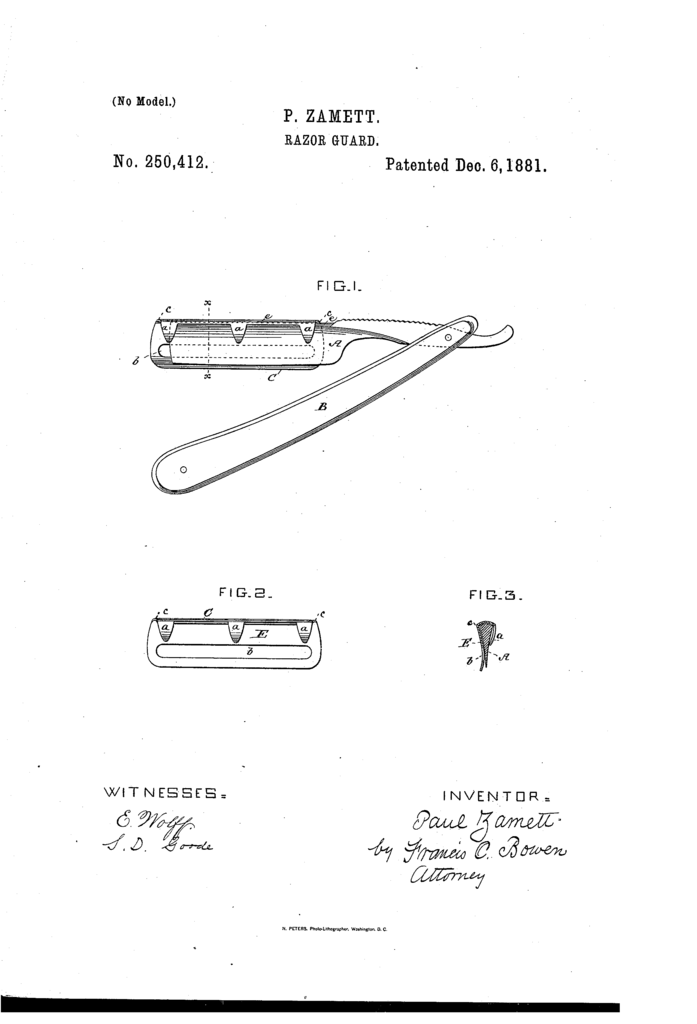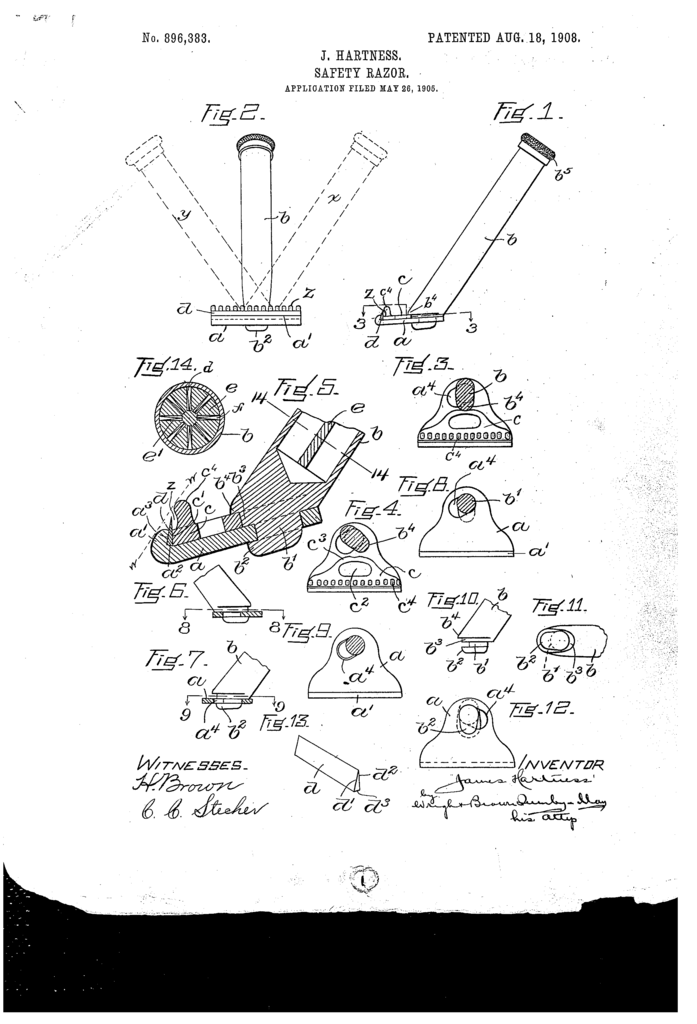Razor: Unknown Injection Moulded Semi Disposable
Blade: Treet Platinum Brush: Vei Long “American style” 50/50
Lather: Palmolive Sensitive w/ aloe vera
Additional Care: Alum Block

Razor: Unknown Injection Moulded Semi Disposable
Blade: Treet Platinum Brush: Vei Long “American style” 50/50
Lather: Palmolive Sensitive w/ aloe vera
Additional Care: Alum Block
Razor: Gillette Slim
Blade: Treet Platinum
Brush: Omega #10048
Lather: Mike’s Natural Soaps Orange, Cedarwood & Black Pepper
Aftershave: BullDog Original Aftershave Balm
Additional Care: Alum Block
The Gillette adjustable 195 razor, adjustable to suit your face. You’ll hardly know you’re shaving
Yours for a mere 21 shillings – back in 1962, that is.
Razor: Gillette Slim
Blade: Treet Platinum
Brush: Semogue TSN LE 2012
Lather: Pereira Shavery Orange Blossom w/ activated charcoal
Aftershave: BullDog Original Aftershave Balm
Additional Care: Alum Block
Good news! Gillette found a way to use more resources, add to the landfill, and drain your wallet at the same time! The disposable Good News razor did all three things at once!
Continue readingRazor: Gillette Slim
Blade: Treet Platinum
Brush: Artesania Romera Manchurian Badger, imitation horn
Lather: Mike’s Natural Soaps Lemongrass & Eucalyptus
Aftershave: BullDog Original Aftershave Balm
Additional Care: Alum Block
Razor: Gillette 1958 TV Special
Blade: Treet Platinum
Brush: Brush Experimental Alpha
Lather: Pereira Shavery Baron’s Choice
Aftershave: Barber No3 Marmara
Additional Care: Alum Block
King Gillette didn’t invent the modern double edge safety razor in a vacuum. The idea of placing a guard near the razor sharp edge goes back to Perret’s 1762 razor guard. And even if Frederick and Otto F. Kampfe patented the first recognisable modern razor in 1880, people did not stop inventing improvements to the straight razor. Enter left; Paul Zammet and his 1881 patent!
Paul Zammet’s improved razor guard isn’t conceptually different from Perret’s idea. A guard is mounted on the blade, in such a way that it will be less likelihood of ending up with a cut throat. Perret likely used wood, Zammet envisioned a stamped metal1 device. As far as can be made out from the patent and drawing, it simply clipped over the back of the blade, and protruded out slightly in front of it. The edge of the guard formed a safety bar, and a cut out let lather and cut whiskers pass through.

Like many such guards, the device would limit the shaver to use only one side of the blade. Paul Zammet recognises this in the patent text, and points out the guard could “easily” be slid of the blade and reversed. How easily this could be done with a wet and lathery blade is left as an exercise to the reader.
The full patent can be read at Google Patents. If you enjoy this sort of thing, I got a page full of patents and other oddities related to shaving.
1) Although he did state in the patent that “metal, rubber, wood, or any other suitable material” could be used. Only metal makes sense in the face of the drawing though.
Razor: Gillette 1958 TV Special
Blade: Treet Platinum
Brush: Vie-Long #12705B
Lather: Goldex Nova Fórmula
Aftershave: Barber No3 Marmara
Additional Care: Alum Block
James Hartness was a prolific inventor, with quite a few patents to his name. While most of them are for machines and machine tools, he also dabbled in safety razors. In 1905 he was awarded a patent for one, specifically set up for disposable blades. Quite the novelty that early, considering that Gillette were trying to set up a system where blades could be returned for sharpening1, and Kampfe, Clemak, Christy (and others using his blades) and even Curbo were selling blade the user could hone at home.
The blades for the razor were to be small, easily manufactured and inexpensive. In fact, they could be made by the mile, once a factory was set up. To quote the patent directly:
One of the primary objects of the invention is to provide a safety-razor with a miniature blade which may be used so long as it is sharp or keen, and then discarded and thrown away. Preferably, the blade is made of wire. Instead of being formed of sheet metal, the blade, while extremely small in cross-section, is so constructed as to be as rigid as possible, said blade having faces converging at the proper angle to form a sharp cutting edge.
James Hartness, in US patent 896,383
The holder for this wire-blade was quite different from most other safety razor. While superficial similar to the so called hoe-style razor, the edge was not pointing in the same direction as most other razors. Instead if “sticking out” from the side of the head, it were pointing “downwards”. This can clearly be seen on the drawing. I am not sure what James Hartnes were trying to achieve by this, it would make going against the grain somewhat awkward on the cheeks.

The blade would be positively tiny. The form and dimensions are given in the patent text;
The blade itself, as previously stated, is made of Wire. It is very small in size, being not more than one eighth of an inch wide and one sixteenth of an inch, or less, thick, at its back. The two faces d1 d2 of the blade are preferably ground flat, and they form with the base or back d3 an isosceles triangle. The blades are made from a length of wire which is properly ground and tempered.
JAMES HARTNESS, IN US PATENT 896,383
This small wedge shaped blade can be seen in Figure 13, bottom centre of the drawing. The unusual angle of the blade’s edge can be seen in Figures 1 and 5. The head itself is a three part clamp, where rotating the handle moves a cam. The cam in turn moves the upper and lower part of the head in relation to each other. This loosens or tightens the clamping force on the blade. If turned one way, the lower part of the head were loosened to replace the blade. Turned the other the whole head would come off. This would be useful for cleaning, and also for storage. In a way, the cam were as critical to the design as the blade were.
The razor is simple enough. Few parts, although a bit of precision machining would have to happen to the camming surface on the handle. The razor suffered, I feel, from the odd angle of the blade. This may be why I cannot find any references to it being manufactured.
The whole patent can be read at Google Patents. And if you like old shaving patents and other oddities, I got a page full you can check out.